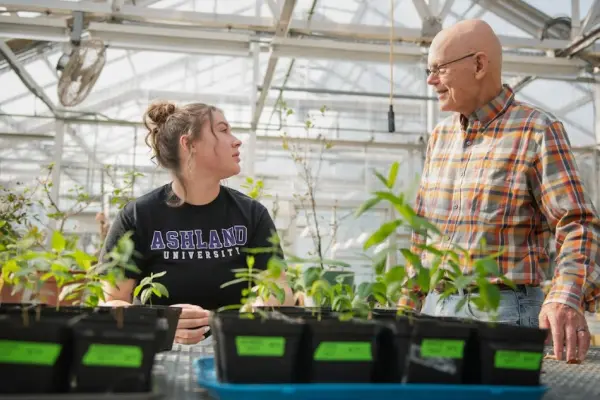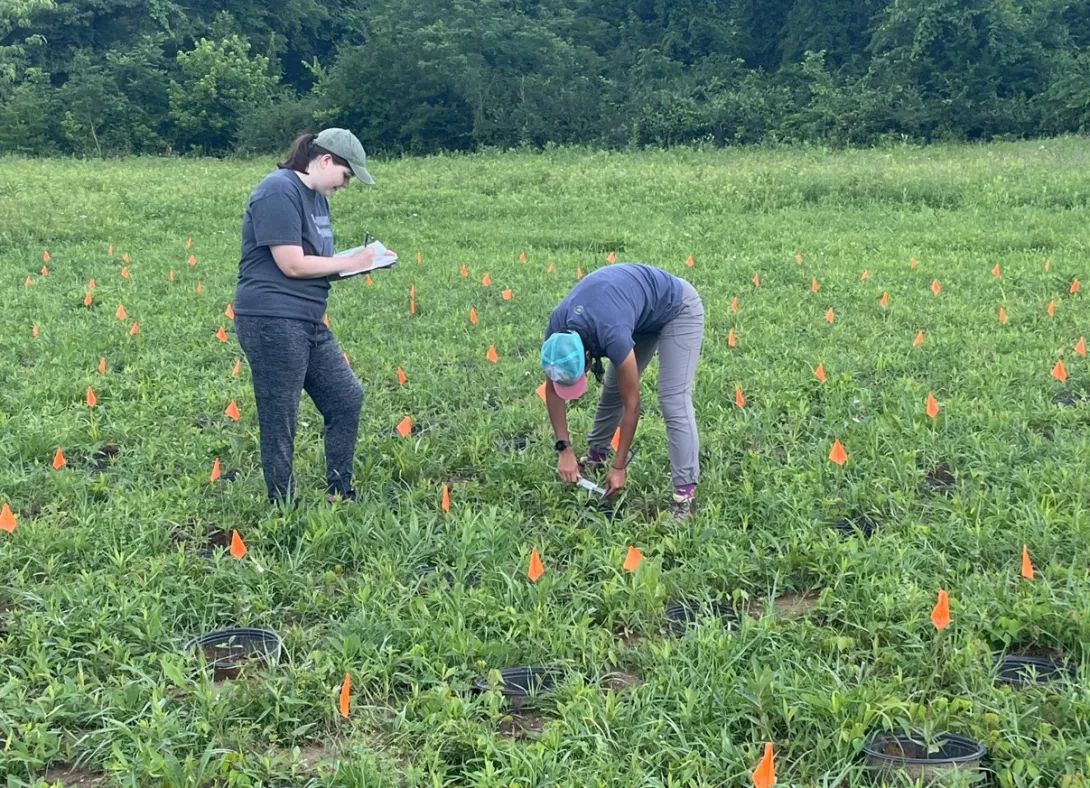
Biology Professor Soren Brauner part of milkweed study with other institutions of higher learning
One of the things Soren Brauner enjoys about his job as a biology professor at Ashland University is collaborating on projects with other professors.
“That is a lot of fun,” said Brauner, Ph.D., who teaches genetics and botany. “I like working with other people.
“Science is mostly a collaborative enterprise these days,” he added. “There are not too many people just working by themselves. You get to bounce ideas off people and people have different strengths, so you can learn from each other.”
Brauner’s latest collaboration is a project researching common milkweed with professors and students from another Ohio university (Denison University), a Minnesota college (St. Olaf College) and a Virginia institution (University of Lynchburg).
Three of Brauner’s former students who have graduated also have collaborated on the three-year study, now in its third year.
“It has been an interesting project to work on,” said Brauner, who has done several other collaborative projects since joining the AU faculty in 1986.
The project, funded by a National Science Foundation grant, is looking at whether milkweed populations are adapted to local conditions.
To find out if they are, milkweed plants collected from 20 populations across the range of common milkweed are growing in three common gardens at Denison University, St. Olaf College and the University of Lynchburg, and Brauner’s DNA study in the project includes additional populations.
“My part is doing population genetics, using neutral DNA markers, and trying to see how genetically different the populations are,” said Brauner, who added it was surprising to see how few genetic differences there are between the populations given the wide geographic range and the extensive genetic variation within the populations.
The results could still change since the project isn’t expected to wrap up until summer 2024, but Brauner said he doesn’t anticipate them to vary much by then.
That’s fine with Brauner, who has enjoyed sharing the research techniques he has learned from past projects and gaining new ones with this latest one.

It also allowed three of his students to work two summers on the study.
Zoe Shellengarger and Maddy Whipp worked on it in the university’s greenhouse in summer 2021.
Savannah O’Bell continued their work in summer 2022 in AU’s growth chambers because of pests and other issues in the greenhouse.
“Lab techniques that should’ve been working weren’t,” Brauner said about growing milkweed in the greenhouse during his presentation of the project at AU’s Faculty College in August. “So, Maddy and Zoe learned a lot about troubleshooting and trying to isolate different aspects of what was working and what wasn’t working.”
With a study leave semester in fall 2022, Brauner picked up where Bell left off that summer with the growth chambers.
“I used that study leave for some more troubleshooting, for some things I had to rerun and a chance to do some analyses,” Brauner said. “It was very helpful to have that time because I could just go in the lab and just focus on those things. That’s hard to do when I’m teaching.”
That allowed Brauner to have his work ready to present to the professors at St. Olaf, Denison and Lynchburg when they met at Denison this past summer to go over progress of the project.
All three summers of the project Brauner has been able to take some of his students to Denison to work with students there taking milkweed measurements to get a feel for the project.
With one of the university’s preserves just outside of Ashland, Black Fork Wetlands, AU students are able to study milkweed there for classes and projects under Patty Saunders, Ph.D., professor of biology.
Because Saunders has been involved in other milkweed studies led by Emily Mohl of St. Olaf, she introduced Brauner to Mohl when the larger project was getting planned and the need for a population genetics component of the study was identified.
Brauner said he was more than happy to help Mohl and work on another collaborative project, which included Brauner presenting the research at the Botanical Society of America meetings in Boise, Idaho, in July.
“I have always enjoyed working with people at other places,” Brauner said. “It helps inform my teaching at AU by bringing new perspectives and techniques to my classes.”